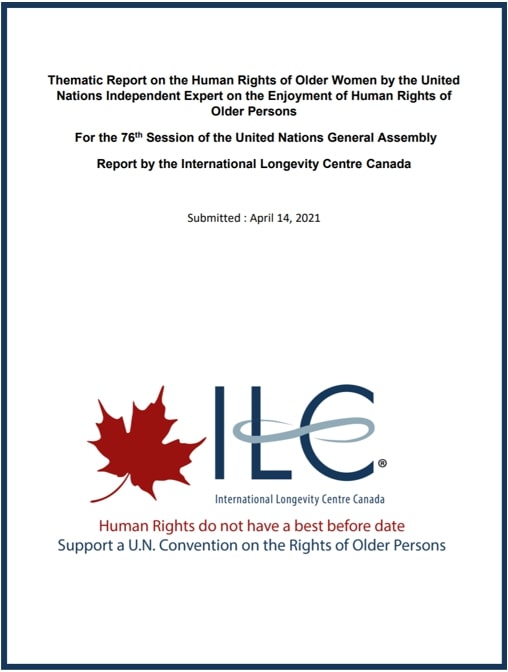14th April 2021
Older women, including those in Canada, face barriers to human rights as the specific impacts of ageism and age discrimination are multiplied by sexism. In Canada, human rights are protected by the Canadian Charter of Rights and Freedoms and by federal, provincial, and territorial human rights laws. However, there are no legal instruments pertaining specifically to older women. As a result, older women are unlikely to complain before administrative tribunals or start legal action before courts, a particularly concerning fact given that a considerable portion of older adults have fixed incomes, lower than average literacy and educational levels, face the onset of health and activity limitations, experience cognitive disabilities, live in environments that reduce their autonomy and community inclusion, and deal with physical, financial, or other forms of abuse.
Older women activists tend to be invisible in analyses of civic engagement or subject to common stereotypes about ageing and gender, facing specific challenges that are correlated with gender. For instance, women comprise 60% of the population aged 85-89 and 66% of Canadians aged 90-94, leading to the generalization of the older female experience in Canada. As such, at the individual level discrimination translates into insults, disrespect, mistreatment, harassment, and exclusion, impacting women’s safety, physical health, and mental health. At the societal level, it creates underrepresentation of women in important spheres of society and in leadership positions.
Older women face higher levels of abuse, femicide, and death from COVID-19 with abusers changing tactics as women age to decrease the frequency of physical violence while increasing abuse via economic coercion, psychological abuse, and verbal threats. As such, legal remedies are not always easily accessible to older adults. For older women, human rights violations continue, and social action is required. While there is not always data to supplement anecdotal rights violations, there are not many options for older women in these situations, proving that a United Nations Convention on the Rights of Older Persons can transform and save lives of older women.



